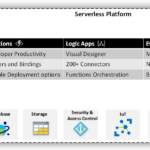Microsoft Commerce Server (Part 2)
Commerce Server 2009 Architecture
The following figure illustrates the Commerce Server 2009 Core Systems.

- Customers uses their browser to access a Web Application that uses Commerce Server 2009 Core Systems. Such Web Applications typically involves Browsing Products, Add Products in Shopping Cart and finally acquiring Products by completing the Checkout process.
- Business users use various Smart Client Applications provided with Commerce Server 2009 to manage the data maintained within the various Commerce Server 2009 Core Systems.
- Each Commerce Server 2009 Core System has an extensive .Net API that a developer can use to access the functionality the system provides.
- Each Commerce Server Core System has an adapter associated with it in order to integrate Commerce Server 2009 with BizTalk Server 2006.
- IT professionals can use Microsoft Operations Manager 2005 to monitor both events logged by various Commerce Server 2009 Core Systems and to track performance using the counters maintained by those systems.
- Microsoft Operations Manager 2005 is one of the recommended ways to track performance using the counters maintained by Commerce Server 2009 Core Systems.
- Commerce Server 2009 provides Commerce Server Manager that can be used by an IT professional to maintain a wide variety of Commerce Server 2009 Core Systems configuration information.
- Commerce Server Staging (CSS) is a feature that can be used to reliably move Web Application Assets in and across different environments.
- Microsoft Commerce Server 2009 Core Systems provides Data Warehousing and Analytics capabilities.
- The Commerce Server 2009 Core Systems Administration database is a SQL Server database.
In Part 3 we will see how we can develop with Commerce Server 2009 Core Systems.







